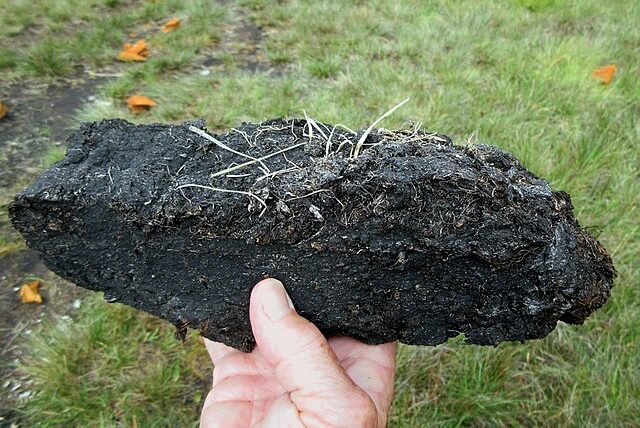
Haughey’s Bog in County Tyrone is the latest peatland in Northern Ireland to embark on the journey of restoration, aiming to address the widespread degradation of peatlands in the region.
While peatlands constitute merely 3% of the Earth’s land surface, they encompass 12% of Northern Ireland’s land area. When considering peaty soils, a quarter of Northern Ireland is covered, primarily in the northern and western regions, yet a concerning 86% of these peatlands are in a degraded state.
The degradation poses environmental challenges, given the vital functions performed by peatlands. Before commercial exploitation at Haughey’s Bog, the peat had effectively sequestered carbon generated over 10,000 years. However, draining for fuel and later compost converted it into a carbon issue for Northern Ireland. Dried-out peatlands lose their capacity to sequester carbon and begin emitting it, contributing to carbon-related concerns.
The initial phase of peatland restoration involves raising the water table by blocking drains to retain water and restore the wet conditions. At Haughey’s Bog, Ulster Wildlife staff consistently measures the water table to establish a baseline for assessment.
Peatlands, in addition to storing significant carbon reserves, also serve as natural water filters. NI Water has utilised peatlands in the Garron Plateau in County Antrim for water filtration, showcasing nature’s solutions to environmental challenges.
Reservoirs in the Sperrins and the Mournes also benefit from peat filtering, enhancing water quality and reducing costs associated with organic matter removal.
Peatlands play a crucial role in flood prevention by slowing down rainwater during heavy downpours. Beyond their environmental functions, peatlands are vital for biodiversity and habitat preservation. They support diverse bog flora, including heathers, peat-forming sphagnum moss, fungi, creating specific habitats for wildlife.
The restoration of peatlands contributes to reversing habitat loss, supporting endangered or vulnerable species like the curlew.
Haughey’s Bog, previously an ancient pine forest, has revealed remnants of trees during the peat removal years. Peat, acting as a preservation medium, provides scientists insights into environmental changes through core samples and carbon dating, aiding in understanding climate fluctuations over millennia.
While the Department of Agriculture, Environment, and Rural Affairs has proposed a peatlands strategy in Northern Ireland, its implementation awaits approval from a Stormont minister. In contrast, Ireland has banned the sale of peat as fuel, and in England, a ban on selling peat for garden compost has been delayed to 2027 for some products and 2030 for certain professional users, drawing criticism from conservation and wildlife charities who emphasise the undervalued importance of peatlands.
——————————————————————————
At Natural World Fund, we are passionate about stopping the decline in our wildlife.
The decline in our wildlife is shocking and frightening. Without much more support, many of the animals we know and love will continue in their decline towards extinction.
When you help to restore a patch of degraded land through rewilding to forests, meadows, or wetlands, you have a massive impact on the biodiversity at a local level. You give animals a home and food that they otherwise would not have had, and it has a positive snowball effect on the food chain.
We are convinced that this is much better for the UK than growing lots of fast-growing coniferous trees, solely to remove carbon, that don’t actually help our animals to thrive.
This is why we stand for restoring nature in the UK through responsible rewilding. For us, it is the right thing to do. Let’s do what’s right for nature!
Donate today at https://naturalworldfund.com/ and join in the solution!

